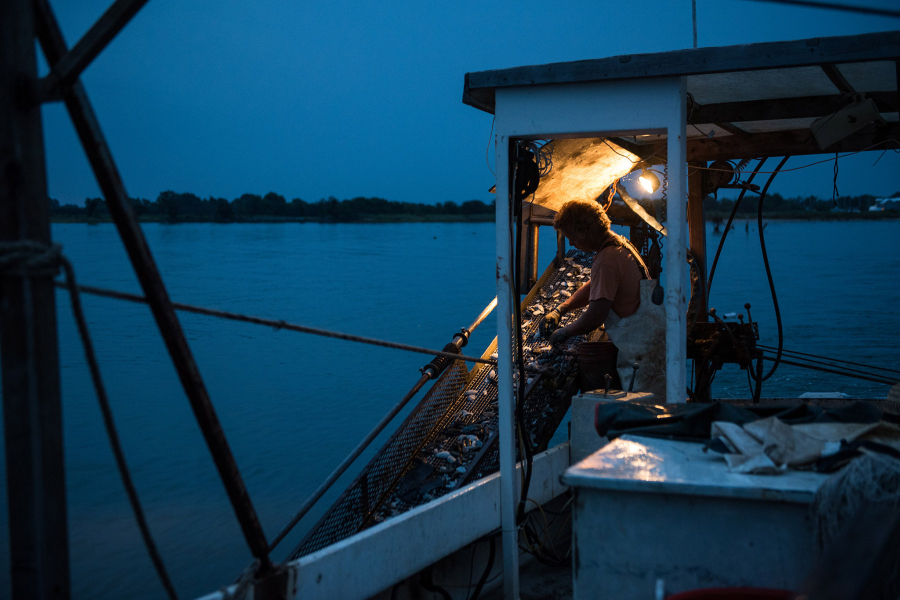Searching for clams in the Chesapeake Bay
Once abundant soft-shell, razor clam fisheries experience dramatic decline

Mark Connolly of St. Michaels, Maryland, harvests clams on Maryland's Eastern Shore in the pre-dawn light.
When the hydraulic escalator dredge—shown above being used by Connolly—was first used to harvest soft-shell clams in Maryland in 1951, it quickly led to the harvest of millions of the bivalves each year. At its peak in 1964, the commercial fishery of soft-shell clams reached close to 680,000 bushels. But in the late 1960s and early 1970s, parasites, disease and severe weather collided to contribute to a stark decline in harvests. Despite a slight recovery in the late 1980s, harvests crashed again in 1992 and have yet to recover. Once the most prolific producer of soft-shell clams in the country, commercial harvest of soft-shell clams in Maryland now measures in the hundreds of bushels.
As soft-shell clam harvests plummeted, watermen turned to harvesting the stout razor clam for use as bait for blue crabs. For nearly two decades, razor clams served as an adequate alternative—but in 2003, watermen reported observing unprecedented numbers of dead razor clams. Subsequent surveys estimated that between 70 and 80 percent of the stout razor clams in the Maryland portion of the Chesapeake Bay had died, most likely from a fatal blood cancer called DN Disease.
These days, watermen looking to harvest clams in the Chesapeake Bay are focused on the hard clam. Aquaculture operations in the saltier waters of the lower Bay have been particularly successful harvesting the bivalves: Virginia shellfish farmers planted 526 million hard clams in 2015, an increase from 400 million a decade prior.
Learn more about the decline of soft shell and razor clams in the Bay.

Comments
There are no comments.
Thank you!
Your comment has been received. Before it can be published, the comment will be reviewed by our team to ensure it adheres with our rules of engagement.
Back to recent stories